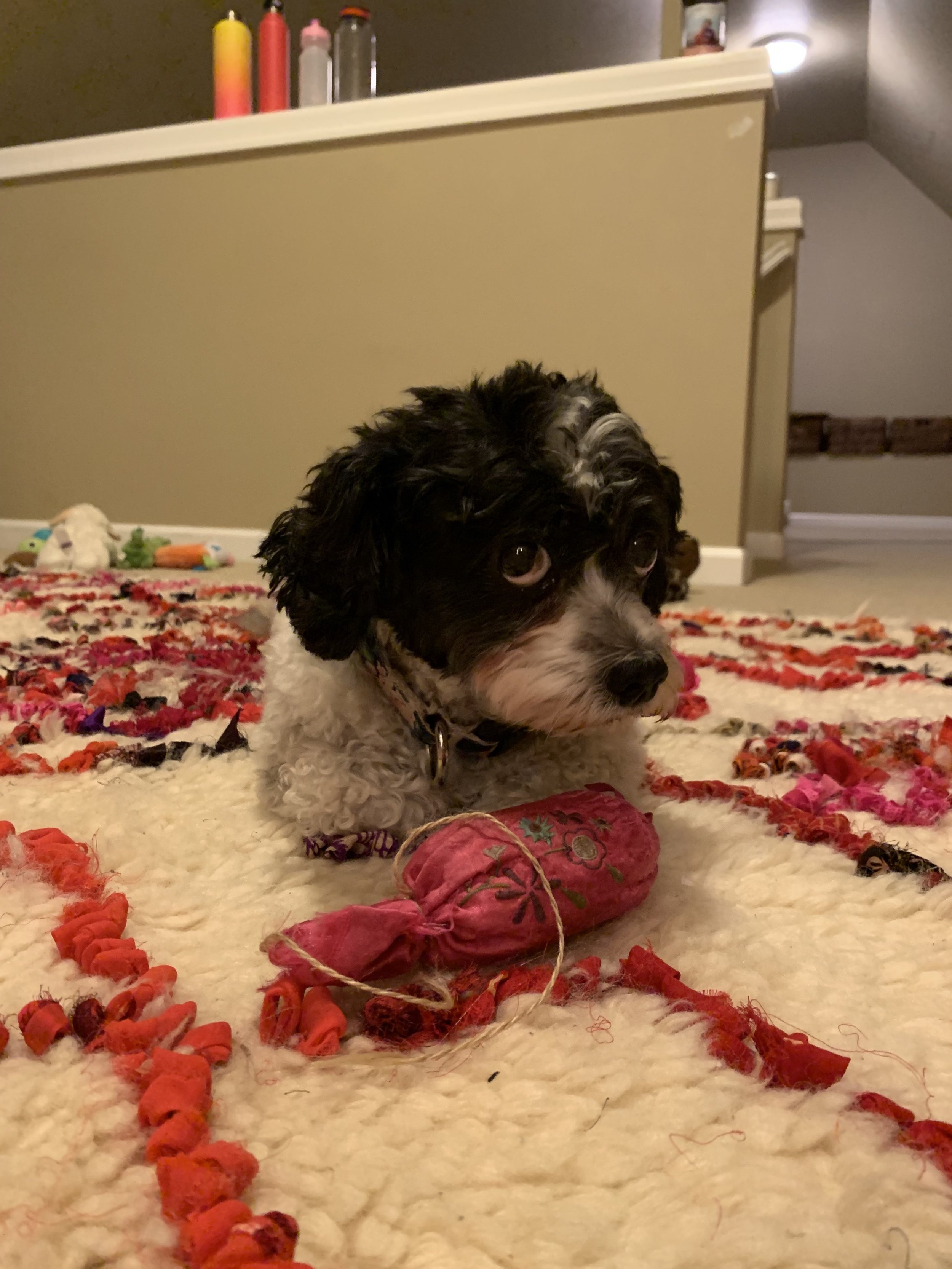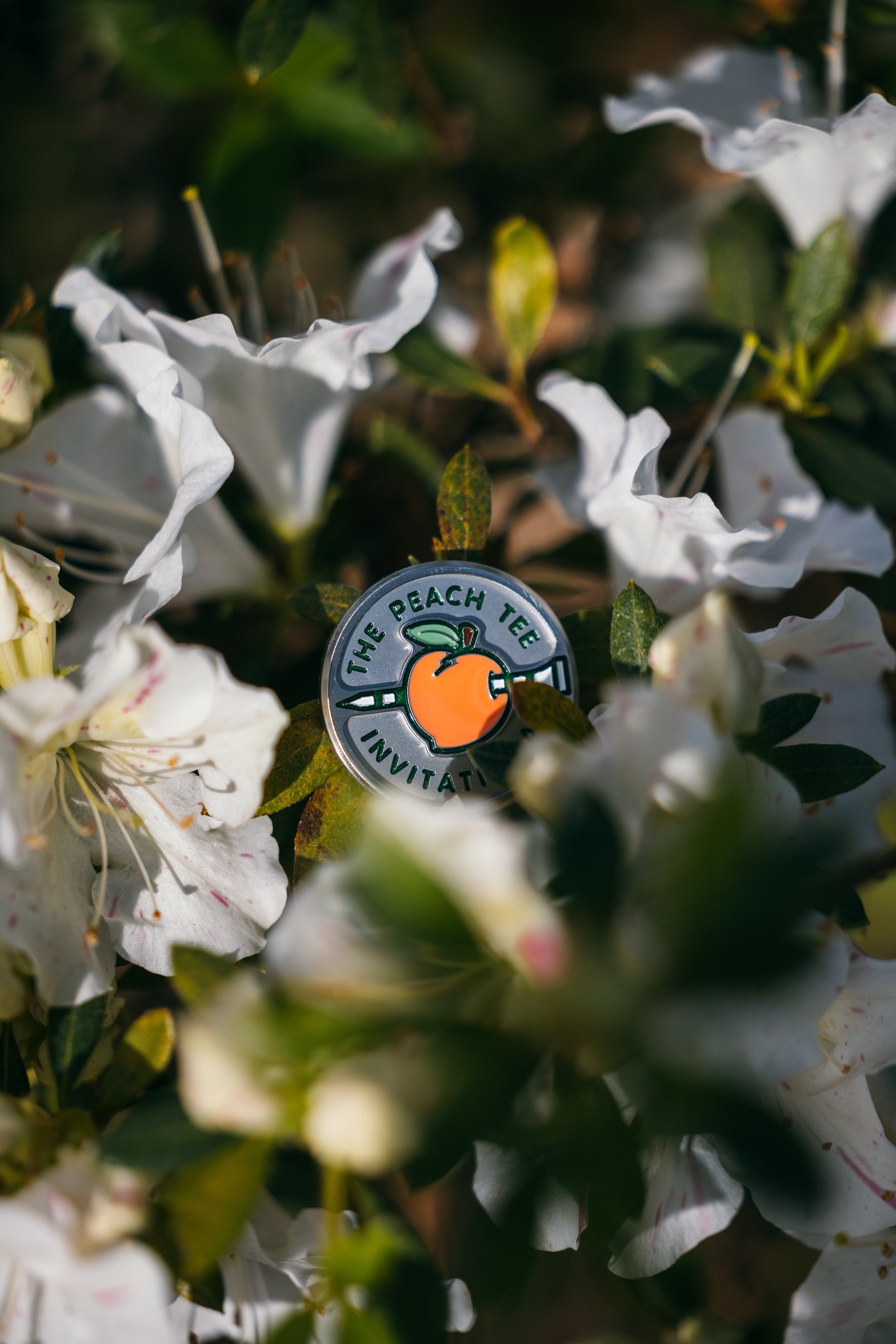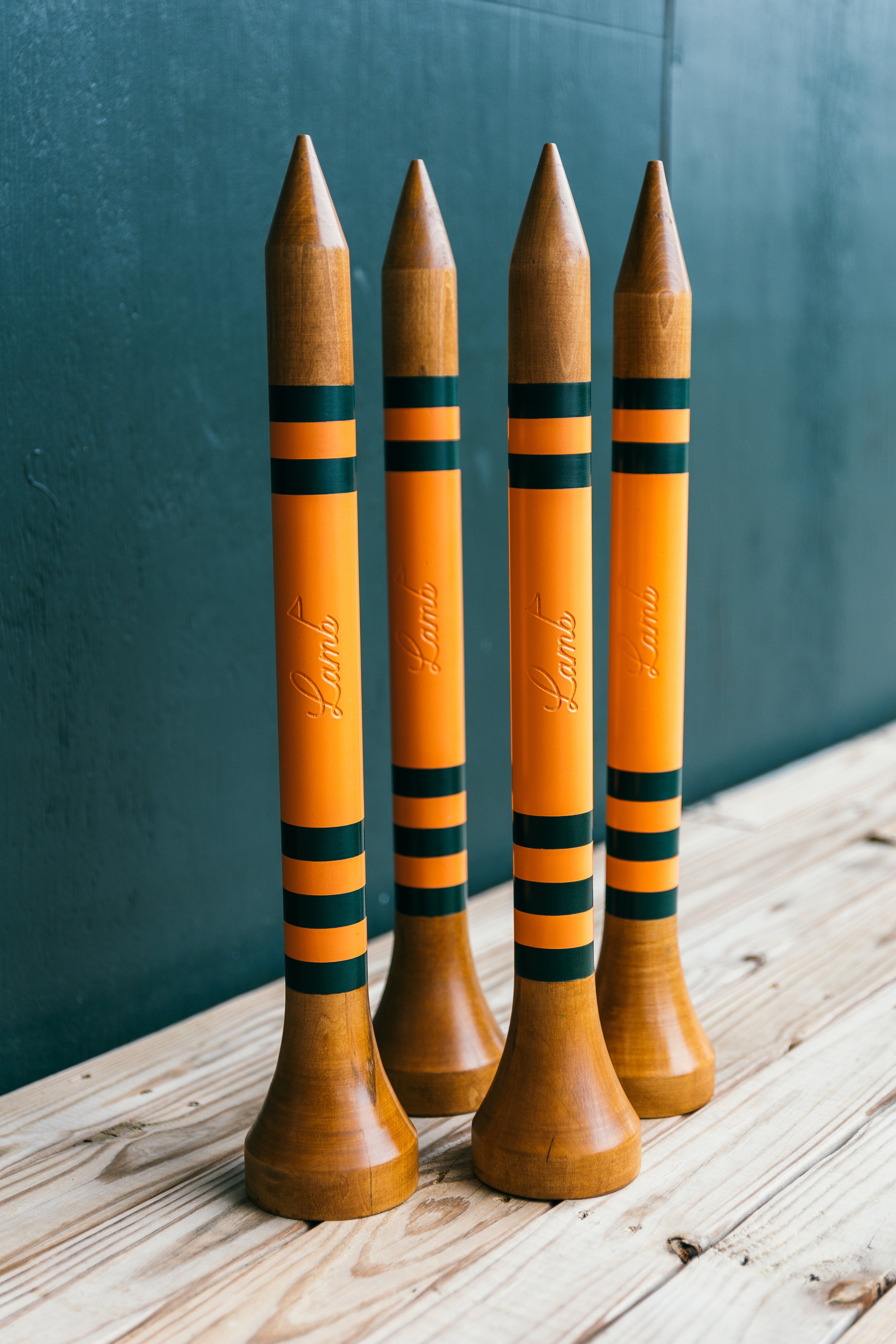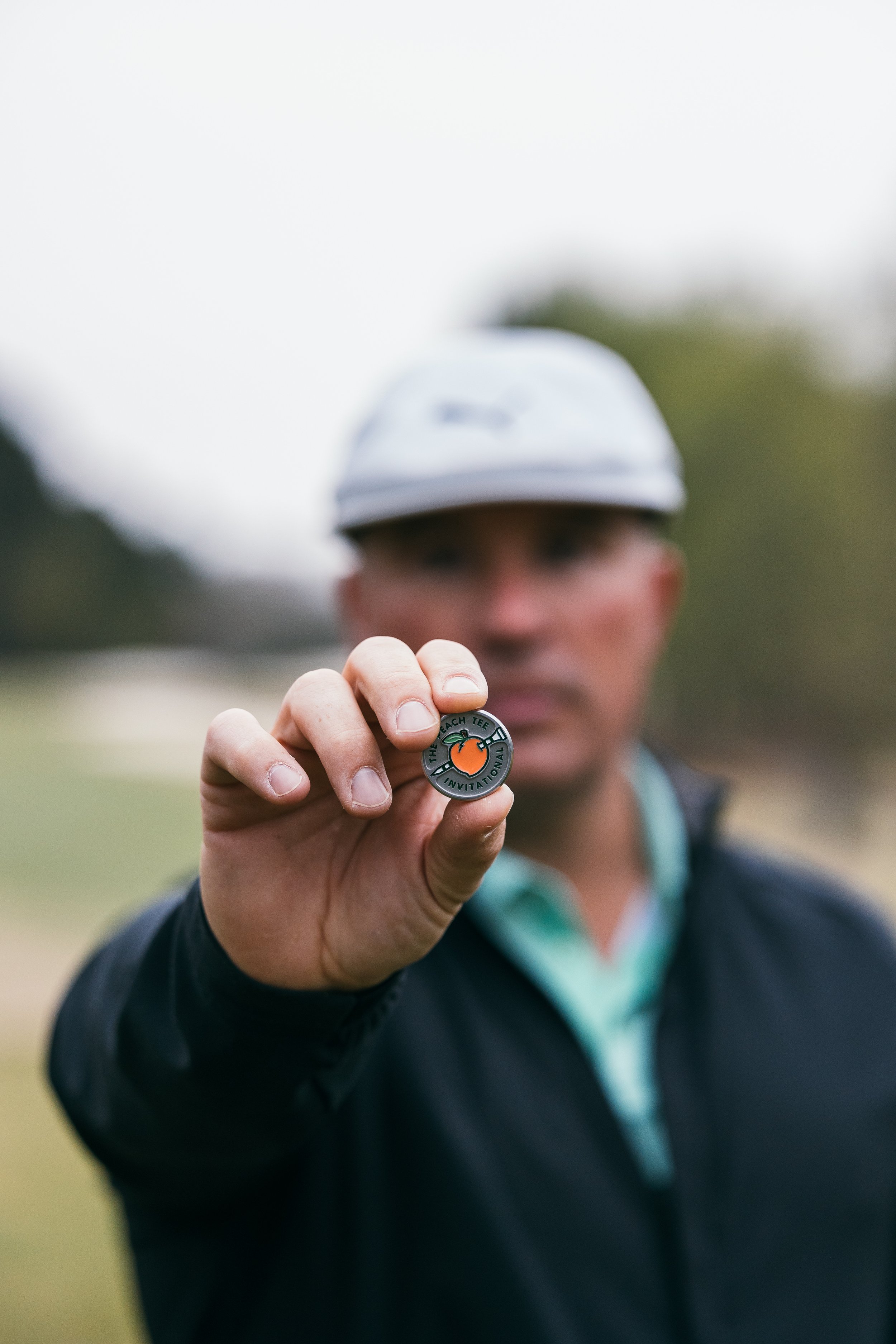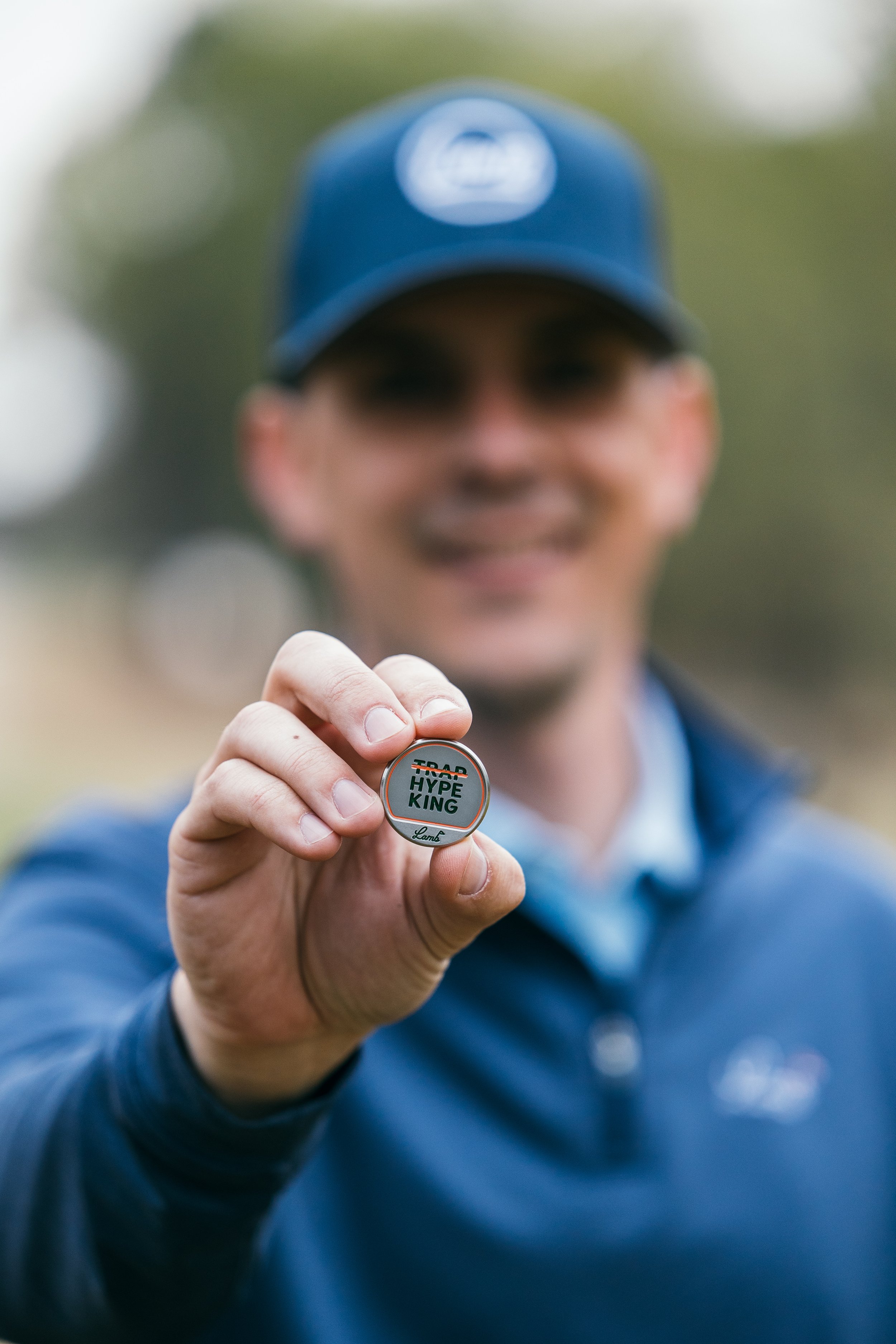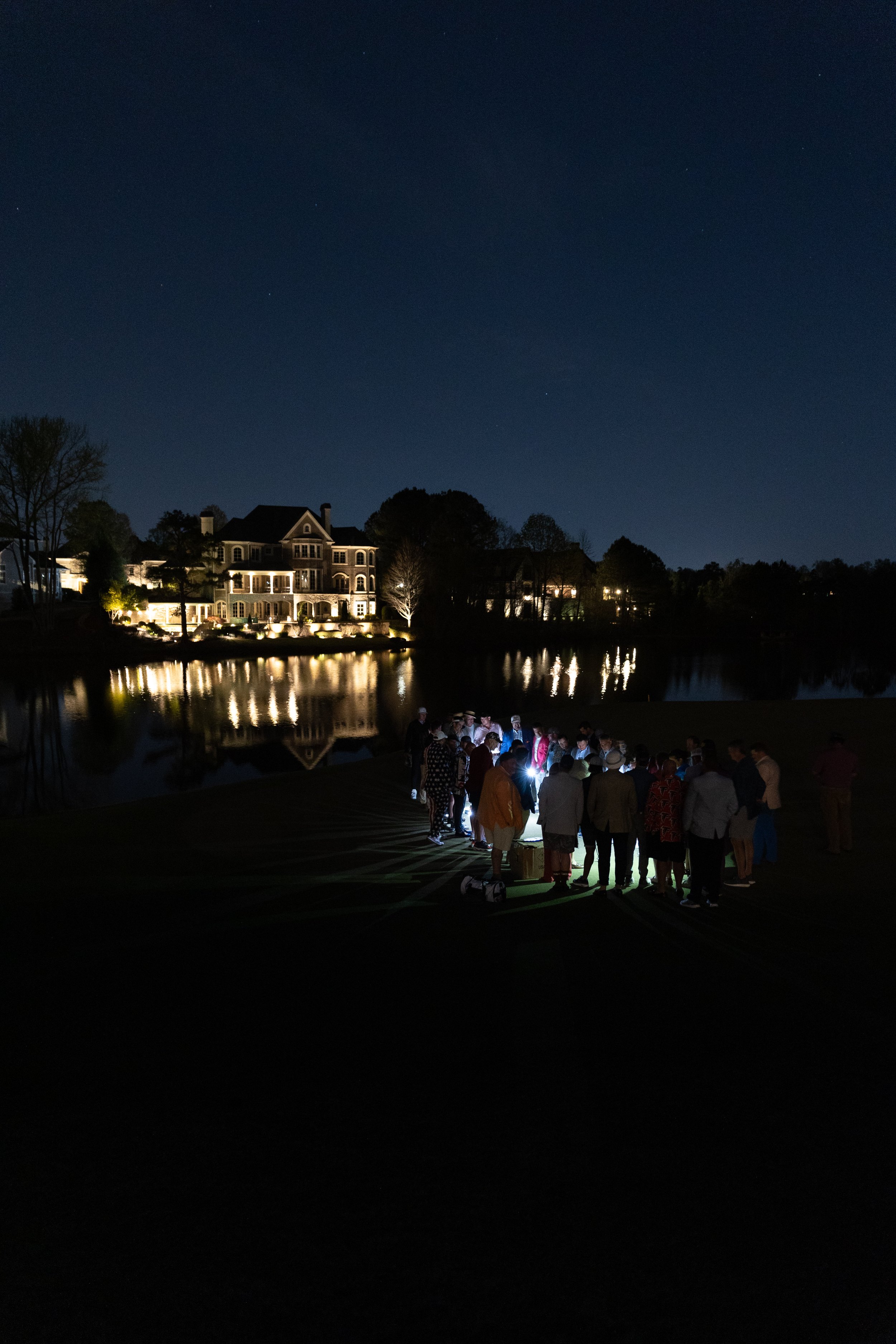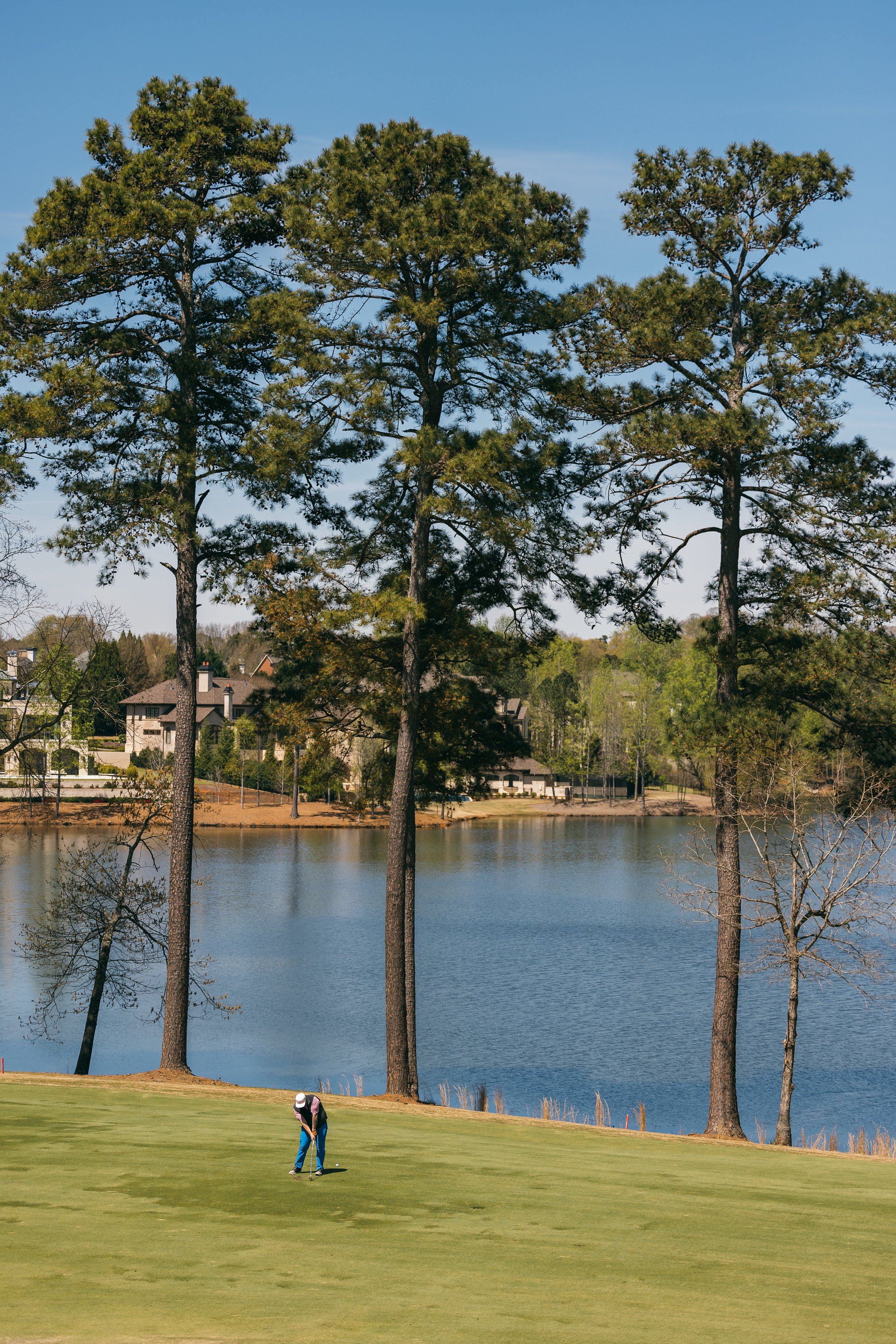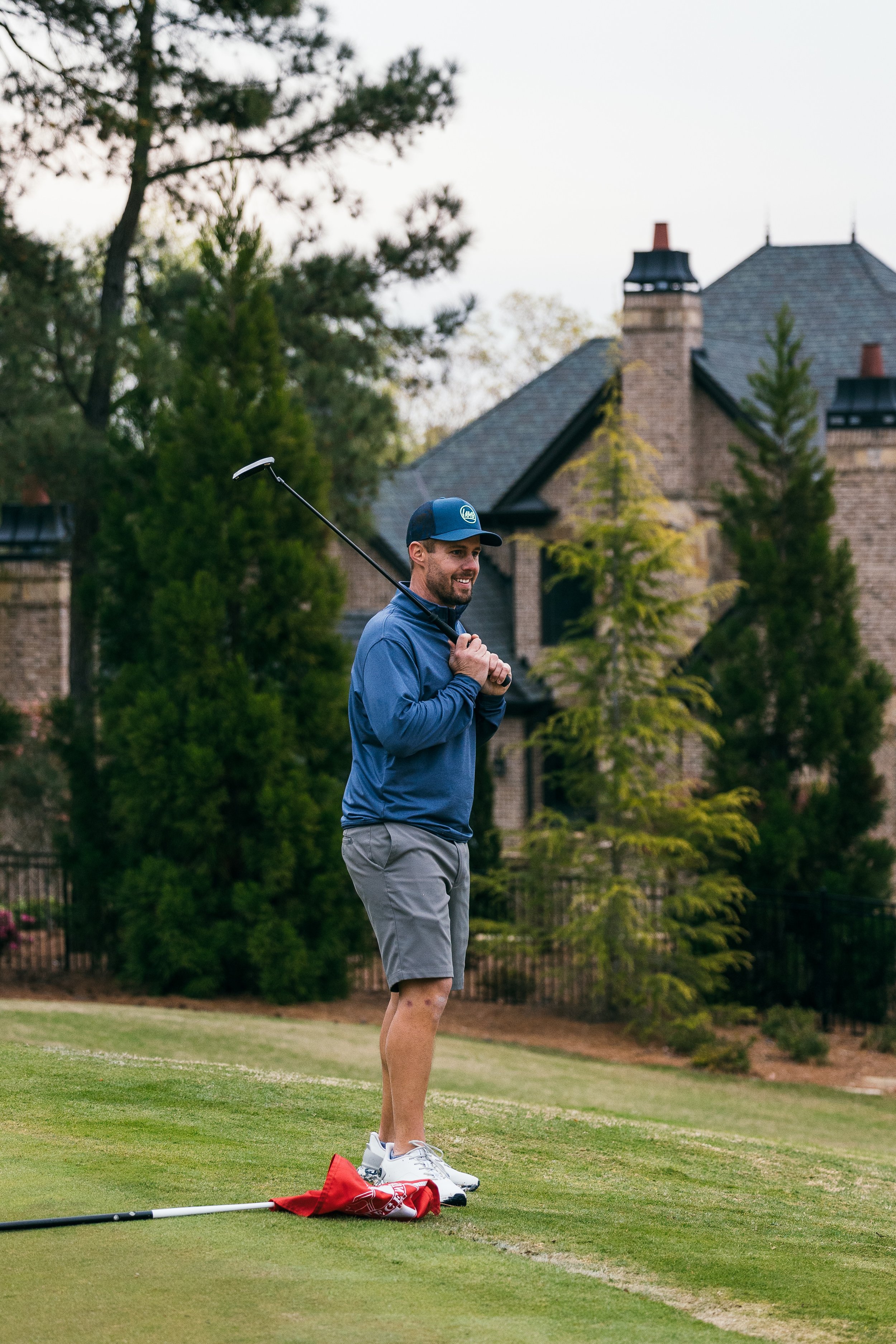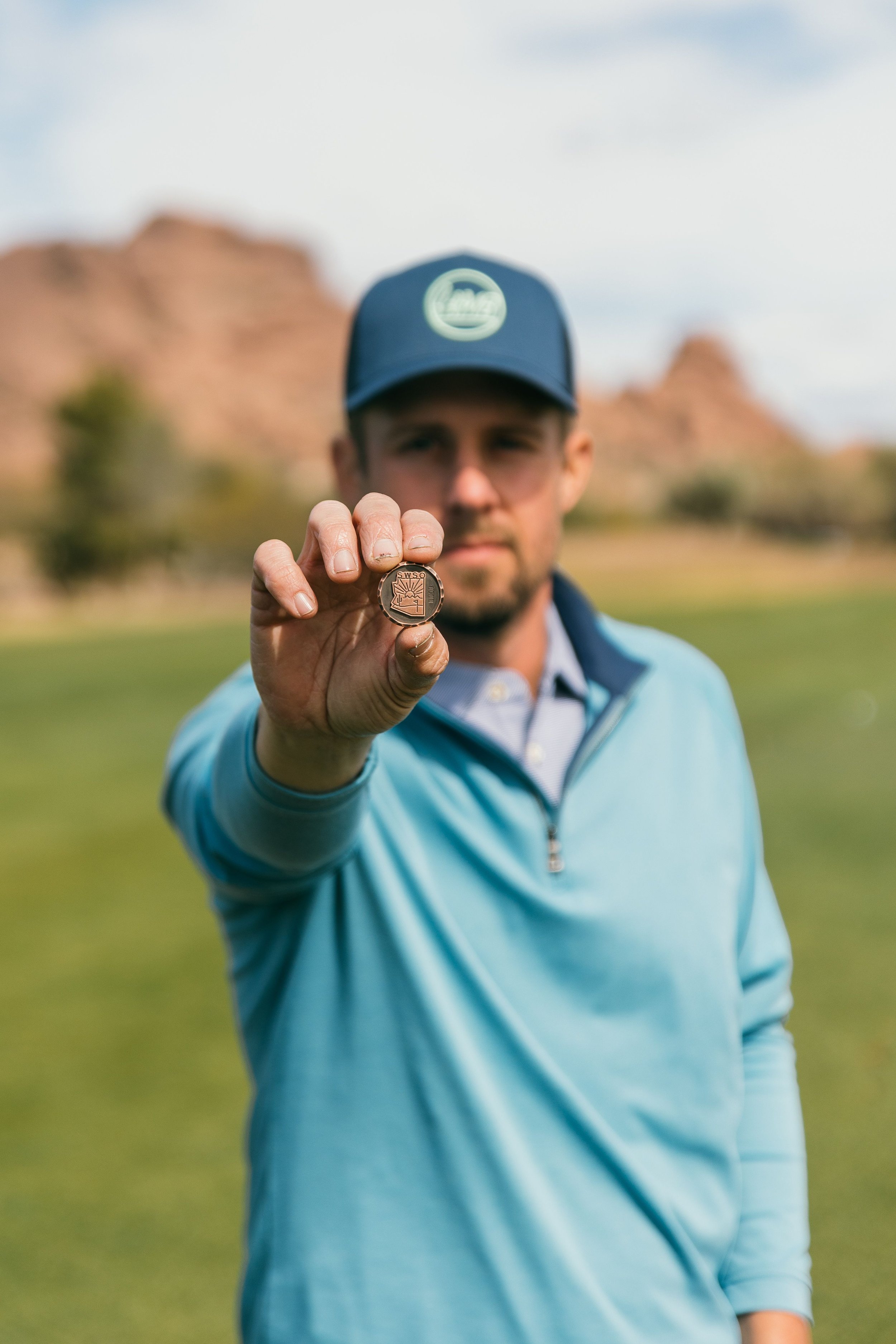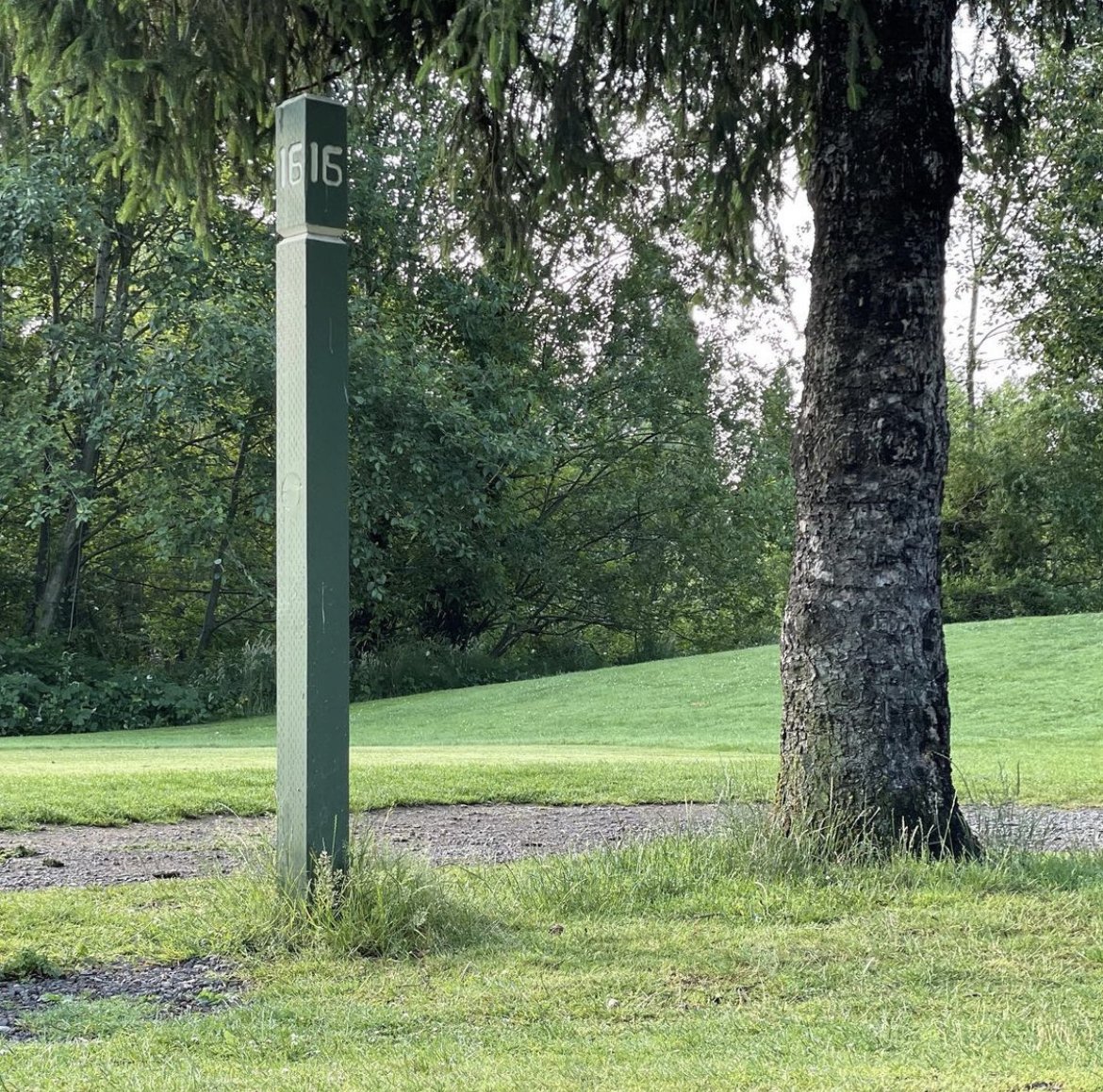I’m very good at being a very bad time.
I’m very good at being a very bad time. I’m talking Hall of Fame levels of talent.
I could write a book on all of the things that have influenced me throughout my life that manifested this generational skill set, but all that would be is a thinly veiled attempt at soliciting sympathy. I don’t deserve sympathy.
I was recently called out for bringing negativity into a situation that did not warrant it. The PR team in my head immediately went into crisis mode, furiously analyzing every previous interaction to find a crack in the claims being directed towards me and my behavior. It took a concerted effort to override that reaction, and allow the statements to be absorbed and digested.
When I took off the mental blindfold and earplugs I had installed to protect my own ego, I could see this most recent scene was just a copy of countless previous interactions that all had one thing in common. I acted selfishly and ruined someone else’s experience as a result.
I am ashamed. I have once again made the mistake of regarding my experience as the most important perspective. Neglecting to recognize that I am no one else’s main character. I placed the burden of my unrealistic expectations on the shoulders of those who did not ask or consent to share the load. As someone who outwardly condemns modern American culture for being far to individualistic, the irony (and hypocrisy) is not lost on me.
My behavior has irreparably damaged future opportunities to interact with genuine, and interesting people, and I have to begin the process of mourning the consequences of my behavior. There is too much negativity in the world to voluntarily spend time with people who seemingly seek to inject more.
I can no longer disguise my insecurities with the mask of ambition and expect there to be anyone left standing beside me when my potential is realized. Standing on a podium in an empty room will not fill the void.
That’s all to say, I have revisited my goals as a player for 2025. I have a responsibility to my fellow playing partners to inspire and uplift. The pursuit of excellence can no longer endure at the expense of others.
Ultimately, if you wouldn’t invite me to play in with you next weekend after finishing out on the 18th, I have failed to live up to my potential - regardless of the numbers I write down on my scorecard.
The guys from the Best Ball Podcast said it best… Golf is people.
I Hope This Isn’t Goodbye
Dotie,
Today I understand the searing pain of loss. The finality of your absence has all but crushed my soul. To know that I will never again feel the touch of your soft fur, or hear your sweet small voice has stripped away a part of me that I did not know could be taken.
Although we met shortly after my 18th birthday, I can’t help but to feel that we grew up together. Days turned to months, months turned to years of us navigating the ups and downs of life as a team. The concept of carrying on with out you is so foreign despite its inevitability.
I read that a dog’s only flaw is the limited number of years they can spend with us, but I think that dogs have a second flaw. Their love is so unconditionally pure that it sets a standard that is impossible to meet.
We didn’t speak the same language, but I don’t think there was anyone in the world who understood me the way you did… and love me regardless. The days I was too sad to get out of my bed, you were right there with me, reminding me that I was not alone.
I can say with the utmost conviction that I would not be the brother, son, friend, or husband that I am without your influence in my life. All of the good I have left to do in this world will have your paw prints on them as evidence of the immense significance of your presence in my life - guiding me to love unconditionally, revere loyalty, and live fiercely. Your energy will live on, multiplying exponentially through every life you touched while you walked amongst us mortals.
Thank you for 14 incredible years. I wish there could have been more, but I understand why you had to go. I will miss you every day.
Good night sweet girl.
All my love,
Ty
Georgia On My Mind
As sheets of rain cascaded off the clubhouse awning above me, I was met by cool Georgia air and rolling hills. I had briefly stepped outside to grab a golf ball from my bag. Tana Lamb had asked all of the attendees of the second Lamb customer/enthusiast event of the year – the Peach Tee Invitational - to sign a ball as part of a shop display dedicated to the seven trips they had planned for 2022. I was grateful for a moment alone to collect my thoughts. We were in the final hours of the Atlanta event and I couldn’t help but to feel that the torrential downpour was symbolic.
It was as if the heavens sensed the monumental effort that preceded event, and all at once exhaled as the burden of months of planning and preparation fell away. For Tyson Lamb however, I got the impression that it was more than the weight of planning this particular trip that he was shedding, if only for a moment.
The scene that greeted me as I reentered the dated clubhouse to deliver my display contribution was a poignant allegory of the Lamb community. An errant golf ball screamed off the face of a meticulously milled putter, across worn down carpet into mahogany baseboards. Laughter erupted spontaneously – the kind that starts from deep within the chest. Every ear-to-ear smile radiated the sentiment of the brand – the heart of the Lambs had been divided into 40 pieces and distributed in little black boxes to a group of fiercely loyal ambassadors.
On the surface, the Lambcrafted brand is somewhat of a mystery. For someone who is touted as a prolific craftsman of putters, markers, and repair tools, those items are noticeably absent from his website’s store. The question of Lamb’s designation as a putter company has become a running gag amongst those who know him best, “Tyson makes putters?” is almost always accompanied by an enigmatic smirk. How can a company thrive, much less succeed, if they hardly sell the very product they are known for? I suppose that would be a valid question… if Lambcrafted were just a putter company.
At my first Lamb event, I was tipped off that the core competency of brand may not actually be the physical product. Three days in Georgia confirmed it; Lambcrafted is in the business of cultivating relationships. The products are just a tool to facilitate connecting with people who share the same heart.
The crux of the event came as Tyson addressed the crowd of sleep-deprived and beer-battered attendees. What amounted to no more than a 60-second sermon felt like a pivotal moment in Tyson’s life. As all eyes in the room were locked on to the man who brought them together. Tyson allowed himself to revel in all that he had accomplished, surrounded by an extended family that would move mountains for him (seriously, I couldn’t imagine the firepower necessary to convince a TPC property to give us unrestricted access to their facilities while the course was closed but the two local hosts of the event, Phil and Adam, made it happen).
An emotional Tyson fought to push the words out of his mouth, as the significance of the moment revealed itself. He described what he called “the 4:00 PM feeling”. As the day matured into its waning hours – usually around 4:00 PM on the second or third day of one of these trips- he was immersed in the joy of being surrounded by a community that genuinely adored him and each other. This time, he went on to explain, it was different. I believe it’s because this time it he recognized that it was the culmination of years of work – not just days of comradery – that was the true genesis of the feeling. This time he gave himself permission to experience unfettered pride that was the result of all that he had built since purchasing his first milling machine and cramming it into his parent’s garage.
A weekend of hearing stories of the day they launched their webstore, financial bootstrapping, and growing from a garage to a several thousand square foot dream shop contextualized Tyson’s moment of clarity in that clubhouse. It’s immediately apparent when you hold something that dawns the Lamb logo in your hand: they are chasing perfection. That pursuit is the impetus of nearly a decade of filthy hands and sleepless nights. It would seem that they are now in complete control of their destiny, which may not have always been the case.
It's a unique position to be in - to quite literally be able to flip a switch and exponentially increase revenue overnight, and then choose not to. Hustle culture would admonish the thought of a company foregoing hundreds of thousands of dollars in potential sales to prepare for and attend an event that serves 0.01% of their customer base – all while very likely only breaking even when it’s all said and done. But for Tyson and the Lambcrafted team, there wasn’t any doubt they were exactly where they wanted to be.
The pursuit of maximizing the bottom line isn’t the engine that drives the company. Perhaps if it weren’t for the people and experiences that came along with money, there wouldn’t be much of a reason to turn the shop lights on every day.
The ferocious pace at which Tyson operates is not indicative of an artist who believes that he has ascended to the upper echelon of his craft. To put your name on anything invites unbridled scrutiny. It is incredibly difficult to stave off the imposter syndrome that tailgates the dichotomy of adoration and criticism– especially when your primary marketing vehicle is Instagram.
For a moment though, it appeared that Tyson had summited the peak. He had made it – whatever that meant to him. He built something that he could be immensely proud of, and he was unapologetically doing it his way. I suspect the feeling was fleeting, but the precedent had been set. Soon enough he’ll be back in the shop working on the next design that will undoubtedly blow our minds. But if the putter thing doesn’t work out, he’d make a hell of an event coordinator.
Photos by Matt Hahn
Who The F**k Is Tyson Lamb
Walk into just about any pro shop and show someone a Tyson Lamb ball marker, divot tool, or – if you’re fortunate enough – putter, nine times out of ten you’ll be met with some variation of “who?”. Where the Lambcrafted brand lacks in notoriety (relatively speaking), they make up for in one of the fiercest core groups of brand ambassadors that you are likely to meet in any industry.
I had the distinct pleasure of participating in my first Lamb event this past weekend in Scottsdale, Arizona. Three days in the desert with almost forty guys that ranged from 15+ handicaps to an aspiring Tour player (remember the name Tate Oakley) were nothing short of a chaotic adventure executed with near surgical precision. Having followed the brand for several years, I shouldn’t have expected anything less. However, I couldn’t have possibly anticipated how dozens of strangers could have made a new guy feel like a part of the Lamb Fam so effortlessly.
Spend some time scrolling through Tyson’s Instagram page and you’ll be surprised at how many times you can mutter “holy shiiiiiiit” in less than an hour. The awe-inspiring designs produced with microscopic precision may be what the Lamb brand is best known for, but I would argue that his legacy will be rooted in the community he has facilitated.
While I’m not an introvert, I am shy and struggle with inserting myself into large groups. It could have been easy for the core ensemble of attendees that have hundreds of stories spread across years of gatherings make me feel like a guest at their party. That couldn’t have been farther from my experience. I was welcomed immediately with a pick-up from the airport by a giant man with the most fantastic mustache I have ever seen. I was offered a neon tiger track suit by a Chevy driving quad god so I could fully participate in dinner festivities that evening. The hospitality was overwhelming, and with every handshake, joke, and pat on the back, I felt less like an awkward tag along, and more like I belonged.
I first learned about the Lambcrafted brand in 2017 after reading an article about an up-and-coming machinist that made SICK putters and knew it. Since then, I’ve had a difficult time articulating exactly what it is about the product that Tyson crafts that separates it from every other boutique golf brand. There are dozens of custom putter and golf accessories manufacturers out there that create amazing things every day. But there is something different about Tyson’s product that I couldn’t put my finger on until now.
Now, it could be the quality of materials, design proportions, scarcity factor, or any number of minute technical details that put Tyson in a league of his own. I don’t consider myself a spiritual person, but after 40 days and nights in the desert (give or take a few), I have a different theory. Perhaps the countless human connections that the brand has played a key role in creating is forged into every piece that leaves his bench. The loving energy of every message thread, surprise care package, and anticipation of the next group gathering somehow inserts itself between the molecules that make up the steel, brass, and copper that is shaped by sharp tools spinning at unfathomable speeds. The secret ingredient isn’t a tool or a steady hand; it is an unconditional dedication to the human spirit… never to be replicated, only imitated. It’s a working theory.
I learned a few things in the desert this past weekend. I learned that there isn’t enough water in the Southwest United States to make me feel like I’ve had enough. I learned that desert golf is hard. But most importantly, I learned who the fuck Tyson Lamb is. Tyson Lamb is a family man, and it’s a BIG family.
Lighten the Load
A post on my Instagram was shared by a fairly large content aggregator recently, and with it a spotlight was cast on my equipment philosophy. Fourteen clubs is more than anyone really needs. It was quickly apparent that sentiment was not shared by mainstream golf, as made evident by the comments on the post. My favorite was “Hipster douche… 0/10”, but “who only 10 clubs???” was a close second.
Admittedly, the idea of playing less than the maximum number of clubs allowed in the bag was an entirely foreign concept to me up until about two years ago. When I jumped back into the golf social media scene, I stumbled upon a small but growing community of golf minimalists touting the gospel of short sets. I was intrigued but skeptical… golf is already pretty tough, it seemed stupid to attempt to make it more difficult.
But does playing with less than a full deck really make golf more difficult? After two years of extensive research, I’m not so sure. I can’t deny that I have flown more than a few greens while attempting to knock down a shot that was “in-between clubs”. However, my trending scoring average provides anecdotal evidence to suggest that more weapons won’t always win a war. Perhaps baby Bobby J wasn’t blowing smoke when we said golf is played “on a five-and-a-half-inch course, the space between your ears.”
I did a book report in junior high on the Payne Stewart biography, and one of the passages that stuck with me was about Payne’s struggle with “stock” shots. He would flub seemingly straight forward shots, but put him behind a rock under three branches on pine straw? Magic. Something about having to pinpoint your focus on creating the “miracle” shot you see in your mind leads to mother-lifting-a-car-off-her-child level results more often than it should. I have found that experience incredibly relatable, and I’d imagine most other seasoned degenerates do to. In that way, we are all wearing knickers out there – in spirit at least.
My most memorable shots are the ones where I said “where the hell did that come from” while pulling the cover off my putter. Rarely do I reminisce on a perfectly executed stock iron shot, but I can recount every second leading up to the 4 iron I hooked around a tree over water to 35 feet from 175 yards out. I can just as easily rehash the same shot I’ve attempted that bee-lined into the nearest branch and puttered out into the rough 15 yards to my left. The point being the journey is what keeps me coming back, not the destination.
It stands to reason then, that if you take away 50% of your potential stock-shot opportunities, you’ll have twice as many stories to tell. Obviously, the goal isn’t to make golf more difficult, but cutting out the clutter of choices forces you to lean more on the most versatile club in the bag… your brain. The directive is no longer “pick the club that flies x yards”. Now it is “find a way to make this club fly x yards”. Now you are playing golf, not golf swing. In that way, it certainly makes golf more fun.
I’m not suggesting you list half your set on Mullie (although I’ll probably be the first to make an offer if that’s what you want to do), but the next time you go out for an afternoon nine, leave the odd irons, a wedge, and a wood at home. I can’t guarantee you’ll play any better or any worse, but I am confident it will be a delightful deviation from the norm.
Fewer clubs, more fun… Papa Johns.
A Case for Less
Every so often an asteroid will buzz the tower of our celestial orbit, queuing click bait headlines announcing the impending apocalypse. Without fail their magnitude will be framed the only way a red-blooded American could comprehend: football fields. The funny thing, to me at least, is that my underwhelming clubhead speed could still nuke a sand wedge a 100 yards. I suspect describing an asteroid as a drivable par four likely wouldn’t inspire the same level of hysteria. But maybe it gives some insight as to why it is tough to get new players to take on golf. Golf is yuge, and it might be hindering its ability to grow yuge-lier.
Swinging a skinny stick with a small head to hit an even smaller ball into a fist size hole completely buries the lead that golf is a massive and overwhelming game. As someone who has had an at times unhealthy… passion for golf for nearly two decades, I still experience periods of crippling anxiety at the thought of heading to the course with a swing that is being held together with Scotch tape and a prayer. It’s a miracle I came back for that second round.
The average golf course spans 150 acres, there are 14 clubs in a bag, you play two 9 hole sides with the goal of shooting a par 72 with a swing that has 10 positions… all that’s missing is a train leaving New York at 60 miles per hour and you just gave a language arts major PTSD. Curiously, outside of junior golf, there doesn’t seem to be much of an emphasis on breaking golf down into more manageable pieces. The fact that there is even a debate on whether a hole in one on a par three course is a real accomplishment illustrates the bifurcation of the 6700-yard-championship-course experience, and everything else.
For the record, if you hole a shot from a tee box and write a one on the card, it’s a hole in one.
Talk to anyone who has recently taken a trip to Bandon or Pinehurst, and they will tell you one of the most memorable experiences is the time spent putting around the Punchbowl or Thistle Due and playing dollar KP’s on Shorty’s or The Cradle. Why do those experiences need to be limited to Mecca-tier journeys, who are likely only going to be enjoyed by those who are already fully established in the game?
I’m not going to pretend I know the first thing about the economics behind running a profitable golf course. There is likely a reason we only see these types of elevated mini golf experiences at properties with triple digit greens fees. However, I don’t think I’m out of line to say $275 for a five hour round where you’ll probably lose two sleeves of $4.00 balls generates an extremely narrow target demographic for this game. There has to be a middle ground.
It’s no wonder golf has historically had trouble attracting new generations of players when an alternative like basketball only requires a Hamilton and directions to the nearest public park. Basketball isn’t only basketball when it’s played on a glossy wood court with perfectly painted lines and uniformed referees. Basketball is tossing a crumpled up burger wrapper into a trash bin. It’s dribbling a waterlogged ball on slick concrete down at the local elementary school. That game winning three isn’t called into question because it wasn’t in an arena. The community allows it to be as big or as small is it wants. In doing so, the door is open to anyone who is willing to pick up a ball. By in large, the same cannot be said about golf.
I don’t think it’s just accessibility. There needs to be a cultural shift in the idea of what it means to participate in the game of golf. As we continue to broaden the scope, accessible outlets for golf should naturally follow. The good news is we are starting to see some of these communities that were on the fringe of the modern golf zeitgeist slowly sneaking up on the mainstream. Random Golf Club and their Field Kit. The Urban Golf events that Muni Kids puts on every Thursday here in Portland. Counterculture influencers and taste makers like Roger Steele, Christian Hafer, and Cole Young have all validated a generation of players who identify more with Happy, and less with Shooter.
My hope is that we all dedicate some time to thinking about how the game could have been more welcoming to us when we first started and take the lead in planting the seed of inclusion in your own community. It might just be simply participating. Crowdsource the movement. The only wrong answer would be complacency with the status quo.
That’s my case for less. Less pomp, lower barriers, shorter courses, fewer clubs. It might make some room for more players.
Fair Play
When Robert Tyre Jones Jr. was asked about the chronic ailment that almost certainly cut his illustrious competitive career short, he had this to say:
“Golf is the closest game to the game we call life. You get bad breaks from good shots; you get good breaks from bad shots – but you have to play the ball as it lies”
The fairway-divots-are-ground-under-repair crowd be damned, Baby Bobby J nailed it. While golf wasn’t my first encounter with the notion that life is going to hand me enough lemons that all the sugar in the world wouldn’t turn them into lemonade, it has certainly helped me learn to accept the sourness with some semblance of grace.
I suspect the optimistic faith we have in an ever-teetering cosmic scale doling out debits & credits is a pillar of The Human Experience: The Early Years. As life begins to serve up body blows and the occasional haymaker (for me, around the time I took a close look at my first paystub and learned about taxes), we start to consider that maybe “karmic justice” is just something we mutter to ourselves when a 5-some won’t let us play through.
Being diagnosed with a brain tumor at 21 was the genesis of a long and tumultuous relationship with the American Healthcare System…spoiler alert: good deeds won’t pay your medical bills.
The physical challenges, wasting countless hours battling with insurance companies, and spending tens of thousands of dollars all because of something I didn’t ask for and could do nothing to prevent would be considered a tough break by most standards. It was especially tough to navigate in between studying for a business calculus final and applying for summer internships.
The twisted beauty of fairness – or lack thereof – is that it has a nasty two-way miss. I accidently walked into an interview for an internship that led to a cushy corporate job, that then led to a career shift with nearly unlimited growth potential. I serendipitously met the most beautiful and intelligent woman two weeks after she “temporarily” moved to Portland (it’s been five years; we’re married so I don’t think she’s going anywhere). We’re planning the next project for the house we happened to buy six months before the pandemic pricing boom. My life is sick, though it’s not without its challenges. The rub of the green.
I will have good days, I will have bad days. The only constant is the challenges and opportunities are going to keep coming. Golf has a funny way of constantly asking us, “so what are you going to do about it?” Striped a drive that clips the last leaf of the limb hanging over the edge of the fairway, sending it OB? Here’s another ball, try again. Pull hook an approach shot into the curb of the cart path near that green, sending it sky high only to drop neatly 25 feet from the hole? The scorecard doesn’t have pictures… time to make a putt.
There is so little in life that we can control. External forces beyond our influence and understanding leave us scratching our heads, asking “how in the hell do I get this on the green from here?!” In golf, as it is with life, it’s how we choose to respond that will dictate the position we are in when the next good or bad bounce comes our way.
The next time I’m up against a tree root after missing a three-foot putt on the previous hole to win my personal major, I’ll try to remember to forgive quickly and “play the ball as it lies.”
I Love Golf
While my passion for golf has waxed and waned throughout the years, my love for the game hasn’t wavered since the feeling of that first pure iron shot traveling back up the through my hands, straight into my soul. As we approach the new year, I have inevitably slipped into long periods of introspection with short intermissions for shoving handfuls of peanut butter m&m’s in my mouth, watching swing tip videos on my phone, and trying to convince my wife to use her vacation time to go to the US Open with me (give me a break, she was born and raised in Massachusetts). Fifteen years after my love affair with this stupid sport began, I’ve come to realize that my relationship with the game hasn’t changed much… which is a problem.
It’s a problem because rarely do I like to play golf. With the financial freedom that comes with being a young professional without children, I am now able to immerse myself in all the accoutrements of the game – playing nice courses, buying new equipment, taking the occasional lesson – to the point that I have hitched my wagon to golf as a core aspect of my identity. It’s my “thing”.
It’s curious then that the last two rounds I played this year were miserable, the final round being one of the least enjoyable experiences I’ve had on the course in a while. I didn’t even play poorly; I managed a 78 and an 83, which for me are decent days on the course. It’s hard to describe, but an overwhelming feeling of dread consumed me as I stood over every shot. Not a specific fear of a snap hook or hosel rocket, but the anticipation of a shot and result that wouldn’t live up to the religious like reverence I have appropriated the game… that no matter the effort, I would ultimately walk off the 18th green disappointed and entirely uninspired.
If it were as simple as a general disappointment with the swing or the strike, I could continue to gaslight myself into thinking that tomorrow will be better. The reality is that even my memory of the best round of the season (the last five years to be honest) - a 74 with an even par 36 on the tough back nine at my club – is fully consumed by a triple bogey on the 9th hole. That is literally all I remember about that round. Pumping it right into the shit off the tee, missing the green with the approach, and three-putting on the number one handicap hole on the course.
Conventional wisdom says “Forget the score, just go out there and hit the ball. You’ll find that spark again in no time!” The problem is that I’m either too smart (or more likely not smart enough) to trick myself into falling for that flavor of pseudo-reverse psychology. More importantly though, I really don’t want to forget the score. I’m sure golf can be a completely spiritual experience for some; the connection to oneself, nature, and the history of a centuries-old game allowing them to transcend par and ascend to a state of nirvana walking up the fairway. I want that, but I also want to hit bombs, stuff wedges, and brag about going low.
Herein lies my predicament: I feel that I either have to inhabit the grinding-down-to-scratch-or-better, winning-is-all-that-matters, clean-up-what-I’m-doing-in-P5-so-I-can-get-to-a-better-impact-position golf fraternity… or the Dead Head, still-plays-with-hickory-shafts, par-is-a-construct commune. I cannot seem to discern a middle ground. And while pledging Gamma Lambda Fi* is not my jam, I don’t particularly care for hemp milk and am not ready to give up hot showers. I need to bridge that gap.
I enjoy the process of grooving a new swing pattern on the practice range. I like collecting cool head covers, ball markers, and unique equipment so I can stage dope pictures and post them on Instagram. I also like reading about the history of old courses like The Lido, or listening to Rob Collins tell the story of Sweetens Cove. I love the comradery and competition of playing with friends. Unfortunately, I have compartmentalized those aspects of my relationship with the game, and I haven’t figured out how to combine them into a melting-pot just yet.
I so desperately want to fall in love with the game again. Not just the idea of playing golf or golf as an abstract experience, but actively participating in the game and coming away with a deep appreciation for what it is. I’m not 100% certain what that looks like, but I know that what I’m doing now isn’t working.
Now seems as appropriate a time as ever for a resolution to start that journey. Marrying the fire of competition and satisfaction of improvement with the appreciation for all that is golf is (and can be) be the end goal. Hopefully acknowledgment is the first step – and that means, what, 11 more to go?
* I’m aware that it’s spelled Phi, but I needed to employ some alternative facts for the sake of the punchline

